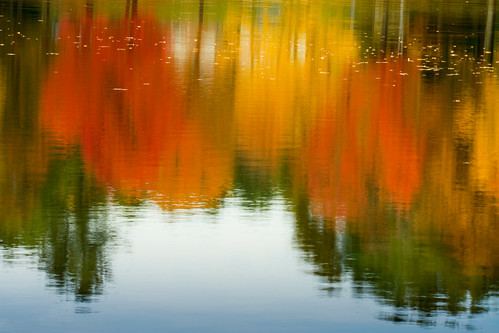
Article published Oct 19, 2008
NH's true colors come in all shapes, numbers
By DAVID BROOKS Staff Writer
dbrooks@nashuatelegraph.com
Millions of people come to New Hampshire each fall to see our leaves. They gasp in awe. They take photographs; maybe they slip a sample into the luggage to show Aunt Tillie back home, but there's one thing they never do:
They never count them.
Let's fix that oversight, shall we?
The question to be considered as another gorgeous leaf-peeping season winds down is this: How many leaves change color in New Hampshire each autumn? A million? A trillion? ("Wicked lots" isn't an appropriate answer.)
More important, is there any way to really know?"I've been in the tree business for 30, 35 years, and I've never been asked that question," Kevin Fredette of Gate City Tree Service said when queried about how many leaves a tree has.
Fortunately, there are folks who measure this sort of thing: those who run landfills.
Many landfills, including Nashua's, separate leaves and compost them, which is cheaper and more useful than burying them.
Unfortunately for us, the leaves are composted with grass clippings and other organic "soft waste" (i.e., not branches or trunks) brought in by homeowners and landscapers."Last year, we had 6,900 tons of soft waste," said Sally Hyland, Nashua recycling coordinator. "This time of year, (the pile) does get colorful!"
If we guesstimate that one-third of that 6,900 tons consists of leaves, and each leaf weighs one-tenth of an ounce, then 736 million leaves were raked up in the city last year.
That number includes non-peeped-at leaves such as oak, and it doesn't include leaves composting in backyards or rotting in Mine Falls Park, but we have to start somewhere.
It isn't much of a start, though, because urban Nashua is hardly representative of leaf-peeping land as a whole.
So let's try another source: the U.S. Forest Service. Those folks love to count trees.
The service says in its New Hampshire's Forest Resources report that there were 4 billion live trees in New Hampshire in 2006 that were 1 inch in diameter or bigger. (Actually, it's 3.996 billion, but let's not be picky.)It also says almost exactly one-sixth of the forest land in the state is taken up by sugar maple, yellow birch and beech trees, which are the heart of peeping targets. That makes 666 million peep-able trees.
Unfortunately, the Forest Service was born of logging, so it doesn't care much about leaves.
The report estimates the "dry biomass" of live trees in the state (300 million tons) and their total volume (9.5 billion square feet), but that's wood. There's nothing about what researchers call foliar biomass, which North Country hotel owners call foliage.
"Our biomass estimates are estimates of aboveground biomass, excluding the foliage – in other words, the wood," said Randall Morin, a research forester with the Northern Research Station, based in Pennsylvania. "We definitely don't have data" about leaves.
But we aren't done yet. Fortunately for us – if not so fortunately for the planet – the specter of global warming exists.
It's fortunate because calculating the ebb and flow of carbon in the atmosphere requires figuring out growth patterns in forests, and a lot of that growth, from the carbon-consumption point of view, happens in leaves.
As part of their research, scientists have developed a formula for estimating "foliar biomass" based on the aboveground biomass estimates developed for foresters. Notable, I was told, is work by Jennifer Jenkins of the University of Vermont, whose Web site lists "measuring and monitoring forest carbon" as a top research topic.
It isn't straightforward, because the ratio depends on the size of the tree, but I got some help from the friendly folks at the Forest Service in Durham, who asked not to be identified, probably because they should have been doing something useful instead of helping answer this quirky question.
They crunched the numbers last week and concluded there are 0.73 tons – 1,460 pounds – of leaves per acre of sugar maple, birch and beech trees.
Fourteen hundred pounds of leaves per acre! No wonder raking makes my back hurt.
Multiply that figure by 2.6 million acres of maple/beech/birch in New Hampshire, estimated by the Forest Service, and you get 1.9 million tons of peep-able leaves.
At a tenth of an ounce per leaf, that's 608 billion leaves in New Hampshire.
Six hundred billion explosions of orange, red, yellow and pink – not bad! No wonder people come from all over the world to see it.
As a mild check of this back-of-the-envelope estimate, notice that it implies the average peep-able tree in New Hampshire has 800 leaves. This sounds a little low, but within a reasonable margin of error.
So, the next time somebody wonders why you live through New Hampshire winters and mud season and black flies, tell them you have 608 billion good reasons.
Happy peeping season!
David Brooks can be reached at 594-5831 or dbrooks@nashuatelegraph.com.
© 2007, Telegraph Publishing Company, Nashua, New Hampshire
No comments:
Post a Comment